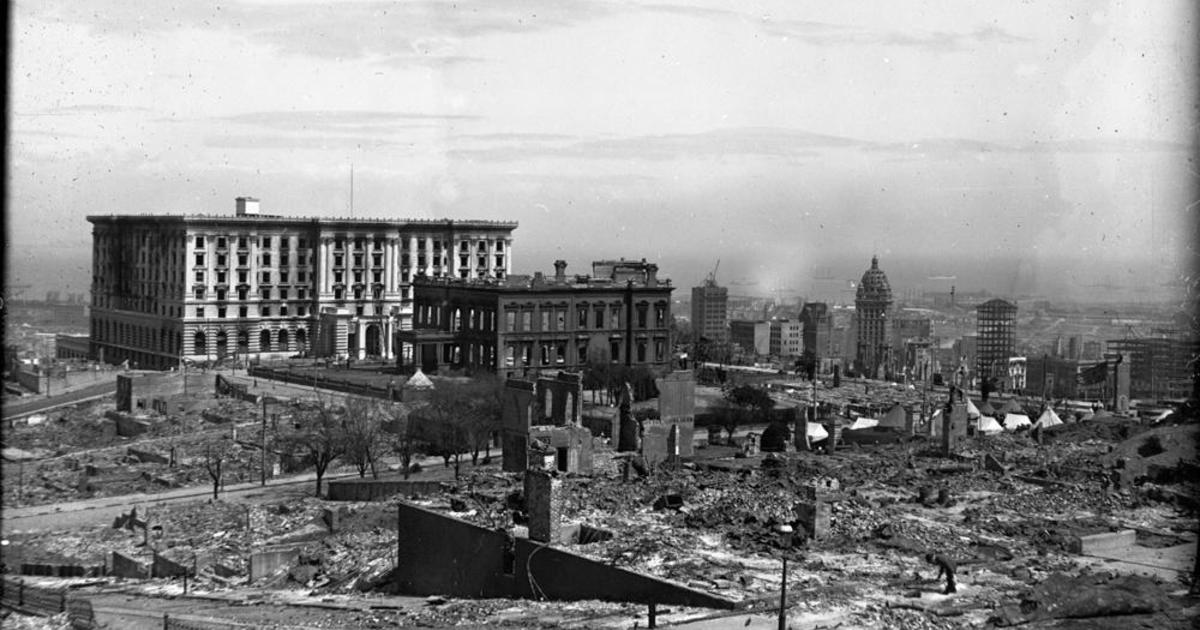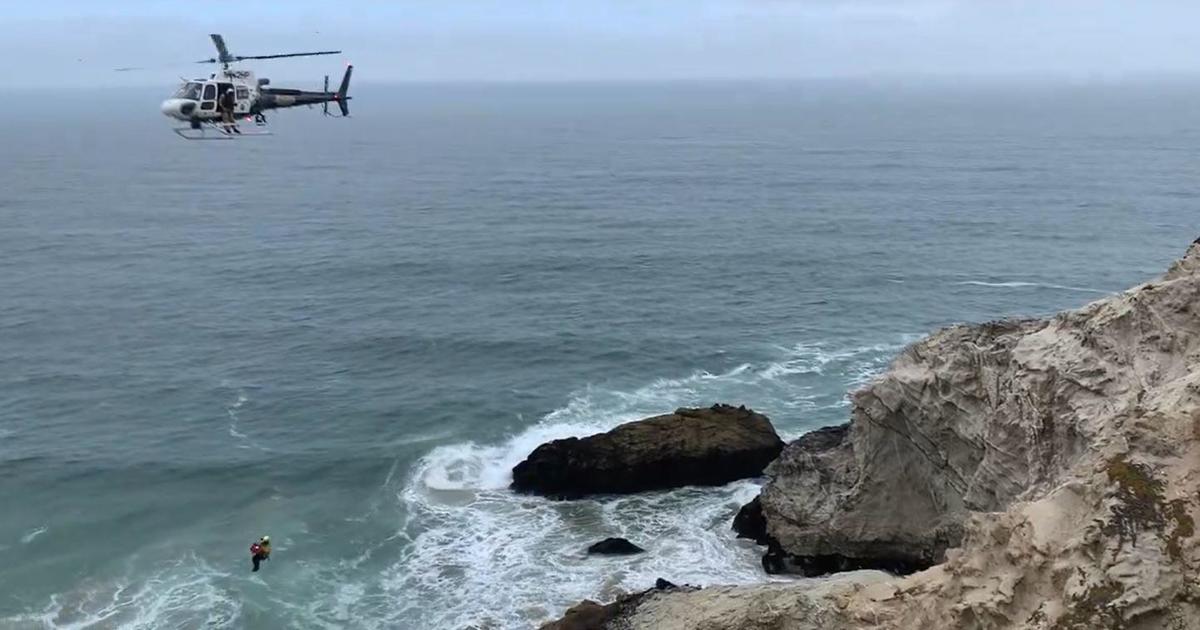Scientists Map Old-Growth Redwoods' Genome to Preserve Future Forests
SANTA CRUZ (CBS News) -- Deep in one of California's few remaining old-growth forests sat an oddity, popular with tourists since the 1880s: a giant sequoia.
So giant a tunnel was carved in its trunk.
Last year that tree toppled over during a storm. It was estimated to be around a thousand years old.
It (and other redwoods like it) is a testament to how much we are fascinated by these ancient evergreens but it's also a reminder of how much we've abused them.
"It looked like the redwoods were a limitless resource, that we could never possibly cut all of them down," said Ranger Alex Tabone. "We needed those for houses and lumber camps and mine shaft tunnel shore-up poles."
Tabone is a ranger at the very first state park in California -- Big Basin Redwoods State Park -- about 20 miles north of Santa Cruz.
It's been a park since 1902, ever since a photographer named Andrew P. Hill led the first-of-its-kind conservation charge to protect these giants -- like what's now called the Father of the Forest tree.
"It was probably only going to be another six months to a year before all of these old-growth trees were standing in right now, would have been gone," said Tabone.
While those trees were saved, other old growth groves were not so lucky. In a 1965 CBS News documentary, our own Charles Kuralt reported on the rush to turn some of the last remaining redwood forests either into lumber or to clear them out of the way to make room for a highway.
"A hundred years ago the great original redwood forest covered two million acres along the California coast," Kuralt said, "but more than two-thirds of the virgin redwood trees are gone."
Their loss was lamented even then. One woman told CBS News, "The more you can preserve of this, the better. I don't think that the world needs any more freeways. Pretty soon you're just going to end up with a bunch of roads with no place to go on 'em."
The final tally: 95% of California's original Redwood forest was logged, wiped clean, leaving only giant stumps as reminders of what had stood here for so long.
And it's not as if threat is entirely over. Even today, only about a quarter of the coast redwood habitat is protected from commercial logging and development.
Those that remain stand as cathedrals of nature. Some have been here long before Columbus landed in the Americas, and tower some 30 stories tall.
Cowan asked, "What's it like when you're here and you see someone that's never been in a redwood forest before to come here and see this?"
"That's the best, that is the best," replied Sam Hodder, president and CEO of the non-profit Save the Redwoods League.
"What do they say?"
"Usually it's something along the lines of 'Aaaahhhhhh my God!" he laughed.
His organization's founders started buying up forest land a hundred years ago, but much of it is younger forests that aren't maturing as big or as fast as some conservationists would like to see.
"We're working with redwood forests that have been clear cut multiple times, and are growing back with such a density of stems, that they're crowding each other out," Hodder said. "It becomes a thicket of spindly trees that don't get enough sunlight, that don't get enough water. … There's too much competition."
So, there's a subtle shift underway from forest conservation to forest restoration – which includes one idea that may have you scratching your heads: logging.
Over the next five years, Save the Redwoods League will be working to thin over 10,000 acres of smaller trees in order to give the remaining redwoods more space, more nutrients, and more light – in order to grow faster.
"Just like in a garden where you prune to accelerate the growth of the dominant plants, you need to thin," said Hodder.,
But figuring out which of these precious trees stay and which ones go is no easy decision.
"We treat all the trees like they're the same, but they're really, really not," said League scientist Emily Burns. She and University of California at Davis professor David Neale are trying to unlock the genetic secrets of some of the oldest living things on the planet.
Cowan asked, "So, as old as they are, and as iconic as they are, we don't really know that much about them?"
"They're the strong silent type," Burns said. "And so we have to use science to help decode what's going on with these trees."
Last year in two labs – one at UC Davis, the other at Johns Hopkins University in Baltimore – they began the complex task of mapping the redwood genome, to uncover Nature's blueprint that is as unique to every tree as our own genetic makeup is to us.
"You have to have a parts lists to understand whether anything is the same or different than it was before," said Neale. "The parts list for redwoods did not exist."
"It is a daunting task though, right?"
"Yeah, we won't be able to do it overnight, you know? I mean it might take a few years, but it's achievable."
We as humans have three billion pairs of DNA – pretty complicated. But the coast redwood has some 30 billion base pairs.
"But I thought we were the most complex organisms on Earth?" asked Cowan.
"Well, no, you should rethink that!" Neale laughed.
It all starts with the redwood's cones – and the seeds embedded in them, high up in the canopy, where someone has to make their way all the way up and pluck them off by hand. It's from the seeds where the DNA is extracted, one scalpel cut at a time.
Millions of little pieces of DNA, the chemical building blocks of life, are all sequenced, and then fed into a powerful computer. "Basically you take a puzzle and you throw it on the floor, and now you have to put it back together," Neale said.
The $2.6 million project has been funded by mostly private donations. When it's done, scientists will have mapped enough of the genome in enough trees to help identify the kinds that are the most resilient and likely to live a nice long life.
"Within a hundred years we absolutely can set these forests on a healthy trajectory where they have many of the characteristics we're looking for in old growth," Burns said.
Call it a nurturing nudge from science, all to save what John Steinbeck once called "ambassadors from another time."
"When so much of the conversation today is about what we've lost – the damming of the world's waterways, the receding glaciers – we have in the redwoods a sense of hope," said Hodder.
"And we can truly leave the world better than we found it."
WEBLINKS:
© Copyright 2018 CBS News. All Rights Reserved. This material may not be published, broadcast, rewritten or redistributed



